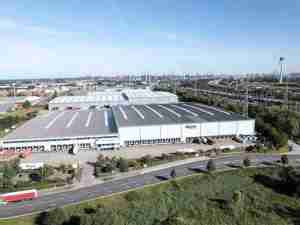- An Enhanced Railcar Float Operation;
- A Lift-on, Lift-off Container Barge;
- A Roll-on, Roll-off Container Barge;
- A Truck Float;
- A Truck Ferry;
- A Double-Stack, Double-Track Rail Tunnel;
- Rail Tunnel with Shuttle service;
- Rail tunnel with a Chunnel service. This alternative would carry trucks through a tunnel on special rail cars, similar to the English Channel Tunnel. Trucks would be positioned on the railcars at two terminals located at the Oak Island Yard in New Jersey and the East New York Yard in Brooklyn;
- Rail Tunnel with Automated Guided Vehicle (AGV);
- Rail Tunnel with Truck Access Alternative
Public input sought on alternatives to improve freight movement across New York Harbor
posted by AJOT | Jan 13 2015 at 04:32 PM | Ports & Terminals
The next phase in a significant public outreach campaign to gather public input on the Tier 1 Draft Environmental Impact Statement (DEIS) for the Cross Harbor Freight Program will begin later this month when seven public hearings will be held in New York and New Jersey. The hearings will continue to gather important input into a variety of alternatives identified to solve a critical regional issue - the need for more efficient, cost-effective movement of goods across the Hudson River and New York Harbor.
The public comment period on the Tier 1 DEIS began on November 13 when the document was released at www.crossharborstudy.com and made available at numerous repositories throughout the region and will continue until February 27. Input gathered from the upcoming hearings - to be held in Newark, Jersey City, Manhattan, Brooklyn, Queens, the Bronx and Long Island - will provide important feedback in the process to identify an alternative or alternatives that merit further review in a Tier 2 study that will be done after the Record of Decision is issued closing out the Tier 1.
The issue of Cross Harbor freight movement dates back decades as increased cargo coming to the region has continued to result in worsening road conditions stemming from the region’s almost total reliance on trucks to transport goods. These worsening conditions included traffic congestion, severe wear and tear on highways and interstate crossings, consumption of fossil fuels and resulting air emissions. The problem is expected to worsen over the next 20 years, given that freight movement in the region is projected to increase by 37 percent. The DEIS specifically targets the movement of freight such as commodities, raw materials, agricultural and consumer products and other industrial and finished goods.
The process of developing potential solutions to the problem began with the compilation of 27 possible alternatives by Port Authority and Federal Highway Administration staff and consultant team, considering previous studies and incorporating input from public participation and stakeholders. After two rounds of screening, the DEIS identified a group of 10 “build” alternatives as the most viable. The DEIS then analyzed each of the 10 alternatives, along with a “no action” alternative, based on their ability to capture a portion of the freight traffic now moving by truck, as well as a high-level consideration of potential environmental effects.
The 10 “build” alternatives each entail the movement of freight across New York Harbor either via barge, ferry or float, or via a rail tunnel. They are:
The “no action” alternative assumes that none of the “build” options are implemented and that only projects already committed and programmed in regional transportation and other plans would be implemented.









